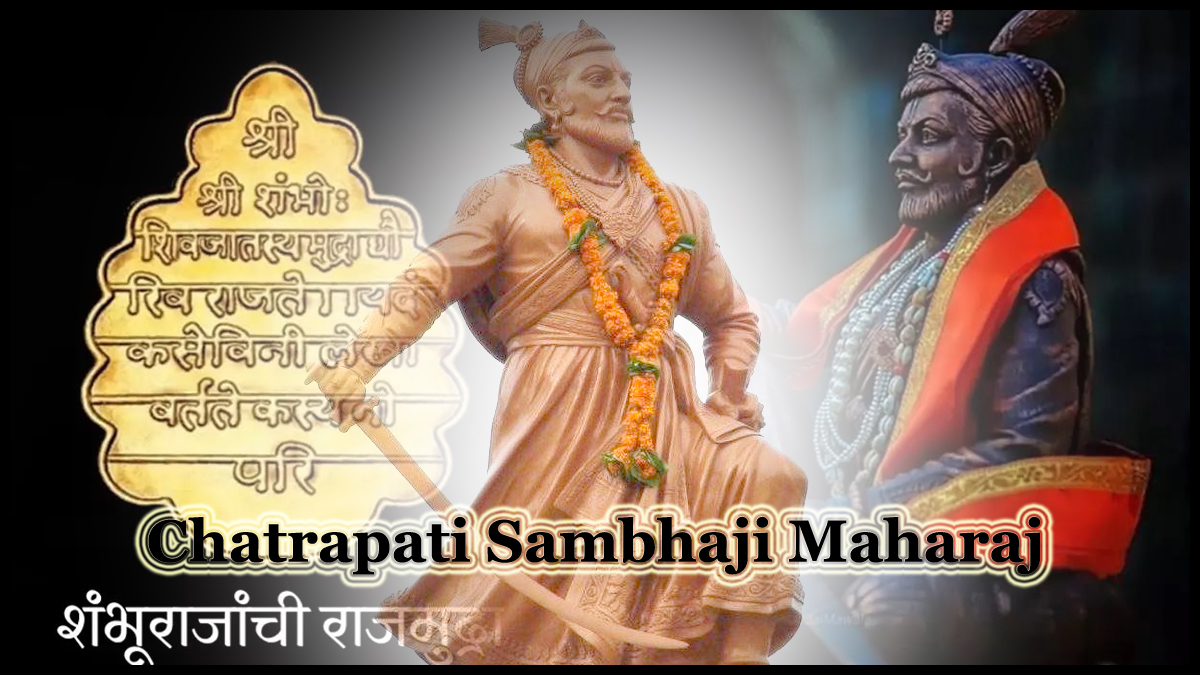
Chhatrapati Sambhaji Maharaj (14 May 1657 – 11 March 1689) was the second ruler of the Maratha Empire, succeeding his father, Chhatrapati Shivaji Maharaj, after his death in 1680. Sambhaji Maharaj was known for his bravery and military prowess, and he led several successful military campaigns against the Mughal Empire during his reign.
Here are some key facts about Chhatrapati Sambhaji Maharaj:
Sambhaji Maharaj was born on 14 May 1657 to Shivaji Maharaj and his first wife, Saibai. He was named Shambhu Raje at birth.
Sambhaji Maharaj was trained in military tactics and warfare from a young age by his father Shivaji Maharaj.
After Shivaji Maharaj’s death in 1680, Sambhaji Maharaj succeeded him as the second Chhatrapati of the Maratha Empire. He was crowned on 20 July 1680.
And Sambhaji Maharaj continued his father’s policy of expanding the Maratha Empire and launched several successful military campaigns against the Mughal Empire, including the conquest of several key territories in present-day Maharashtra, Gujarat, and Karnataka.
Sambhaji Maharaj was a patron of the arts and literature
Sambhaji Maharaj was a patron of the arts and literature and was known for his love of music and poetry. He wrote several works of literature in Marathi, including a play called “Budhbhushanam” and a treatise on war called “Niti-Prakash.”
Sambhaji Maharaj was captured by the Mughal Empire in 1689 after a long and brutal siege of his capital city, Raigad. He was subjected to torture and eventually executed by the Mughals on 11 March 1689.
Despite his short reign, Sambhaji Maharaj is remembered as a brave and charismatic leader who fought tirelessly to defend his kingdom against the powerful Mughal Empire. His legacy lives on in Maharashtra and other parts of India, where he is celebrated as a hero and a symbol of Maratha pride and nationalism.
Maharaj faced several challenges during his reign
Sambhaji Maharaj faced several challenges during his reign, including conflicts with his stepmother, Soyarabai, who had ambitions for her own son, Rajaram, to succeed Shivaji Maharaj instead of Sambhaji Maharaj. This led to a power struggle within the Maratha court, and Soyarabai ultimately conspired with the Mughal Empire to overthrow Sambhaji Maharaj.
Sambhaji Maharaj was also known for his religious tolerance and his support of people from all faiths. He was particularly supportive of the Marathi language and culture and encouraged the development of Marathi literature and art.
Sambhaji Maharaj’s life has been the subject of several books and movies. Also including the novel “Raja ShivChatrapati” by Babasaheb Purandare and the film “Sambhaji 1689” directed by Vishal Pawar.
His death was a significant event in Maratha history
Sambhaji Maharaj’s death was a significant event in Maratha history. And it marked the beginning of a period of decline for the Maratha Empire. However, his legacy continued to inspire Marathi people in their struggle against colonial powers in the 19th and 20th centuries.
Sambhaji Maharaj’s legacy is celebrated every year on his birth and death anniversary. Also known as Sambhaji Jayanti and Sambhaji Punyatithi, respectively, in Maharashtra and other parts of India. On these occasions, cultural programs, processions. And other events are organized to pay tribute to the Maratha king’s bravery and sacrifice.
Also Read – All about Right to Education
– Sambhaji Maharaj was a skilled warrior who led his army from the front. And was known for his bravery and courage on the battlefield. He was also an astute strategist who devised innovative tactics and techniques to counter the Mughal army. Also which was far larger and better-equipped than the Maratha army.
Maharaj was an accomplished linguist and could speak several languages
– Sambhaji Maharaj was an accomplished linguist and could speak several languages, including Marathi, Hindi, Urdu, and Persian. He was also a patron of the arts and literature and supported many Marathi poets, playwrights, and musicians.
Also Read – All about Credit Suisse
– Sambhaji Maharaj’s death was a gruesome and painful one. He was subjected to various forms of torture. Also including being pierced with hot iron rods and having his tongue. And eyes gouged out before he was finally beheaded.
– Sambhaji Maharaj’s death is often viewed as a symbol of Maratha resistance against foreign invaders. And has been compared to the martyrdom of other legendary Indian heroes, such as Bhagat Singh and Subhash Chandra Bose.
– Sambhaji Maharaj’s legacy continues to inspire Marathi people today, who see him as a symbol of Maratha pride and identity. His story has been a source of inspiration for many Marathi nationalists. And freedom fighters who have fought against colonialism and oppression in India.
Also Read – All about Down Syndrome

2 thoughts on “All about Chhatrapati Sambhaji Maharaj”